Save 20% Off SiteWide in our New Year Sale

Introduction
A few weeks back, we published a blog post focusing on the essential items for winter backpacking, with the main priority being to stay warm.
If you have any plans for winter trips in the future, you can bookmark the blog post titled "Top 11 Winter Backpacking Essentials" for reference.
However, when it comes to summer backpacking, you'll encounter different challenges such as inclement weather conditions like heavy rain and storms, dealing with mosquitoes or bugs, combating dehydration caused by the heat, as well as taking care of sun protection like sunscreen and aftercare products like aloe vera. It's also important to consider wearing hats and long sleeves to shield yourself from the sun.
To sum it up, ensuring your body stays dry, hydrated, and protected from insects is paramount when embarking on summer backpacking journeys.
In our upcoming blog post, we will cover everything you need for your summer backpacking adventure, ranging from backpacks and shelters to hygiene and toiletry items.
Similar to the previous approach, we will begin with the essential items known as the "Big Four": a backpack, a tent, a sleeping bag, and a sleeping pad.
Backpack
Similar to winter backpacking backpacks, summer backpacks also share the requirement of providing ample space to accommodate all your gear and essentials while being durable and ensuring a comfortable fit for your body.
However, the distinction lies in summer backpacking, where the focus shifts towards lightweight, waterproof, and easy-to-access hydration options in backpacks.
This proves advantageous as you traverse diverse terrains and potentially encounter rain showers, reducing strain on your body during long hikes.
Furthermore, selecting a waterproof or water-resistant backpack becomes essential to safeguarding your belongings from unexpected downpours or accidental spills.
In addition, having easy-to-access hydration options ensures you can stay hydrated in the most convenient manner and protects you from potential hazards.
Specific Features
When choosing a summer backpack, it is beneficial to consider specific features that cater to the season's requirements.
An invaluable addition is a rain cover, which offers extra protection during wet conditions.
Easy-to-access stretch mesh side pockets are essential for carrying water bottles, ensuring convenient hydration to keep you refreshed on the trail.
Moreover, an internal reservoir sleeve with a center back exit port enables you to have a drink on-the-go without the need to interrupt your momentum.
However, it is crucial to exercise caution with the internal reservoir sleeve to prevent water leakage that may potentially dampen your equipment and compromise your trip.
Additionally, a well-organized backpack significantly enhances your summer backpacking experience.
Look for a backpack equipped with multiple compartments and pockets, facilitating efficient segregation of your gear and essentials.
This allows for quick and easy access to specific items without the need to rummage through the entire contents of your backpack.
Among the noteworthy options for summer backpacks are the Osprey Atmos 65 and Aura 65 AG. These backpacks typically weigh around 4.5 lbs for their 65L volume.
In addition to their quality construction, comfortable fit, and excellent weight distribution, they encompass all the aforementioned features, making them ideal choices for summer backpacking adventures.
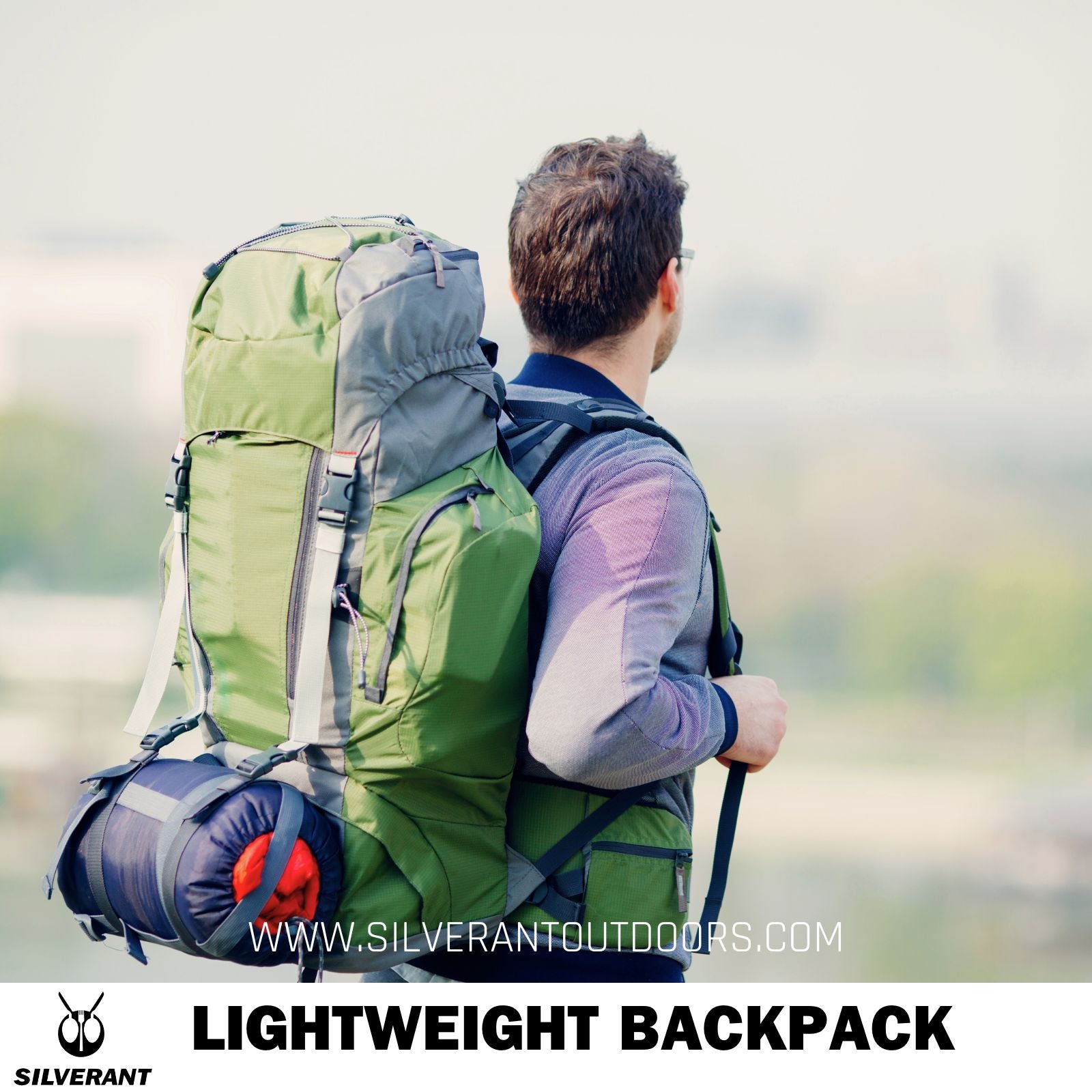
Tent
When considering the next item on the list of the Big Four, we come to the tent, a crucial component of your camping gear.
It is highly advisable to select a tent that is both lightweight and waterproof, ensuring easy setup and adequate ventilation.
This is particularly significant when camping in hot and humid locations, where proper airflow becomes vital to maintaining a comfortable environment inside the tent.
High Vent
One important feature to look for in a tent is the High Vent, which promotes better airflow and helps eliminate excess moisture buildup.
By allowing warm air to escape and fresh air to circulate, the High Vent feature assists in keeping the interior of the tent dry and comfortable, even in challenging weather conditions.
Floating Floor
In addition, consider a tent with a Floating Floor design. This innovative feature helps reduce stress on the floor of the tent and minimizes the risk of punctures from sharp objects.
It also acts as a barrier to prevent wetness from seeping through the floor, especially after heavy rainfall, ensuring a dry and comfortable sleeping area.
3-Season Tent
When it comes to summer backpacking, a 3-season tent is the ideal choice. These tents are designed to provide versatility and can be used during spring, summer, and fall.
They are typically lightweight and crafted to withstand moderate rain and wind, making them suitable for various weather conditions encountered during outdoor adventures.
One outstanding example of a 3-season tent is the Lunar Solo Backpacking Tent from Six Moon Design.
Despite its remarkably light weight of only 29.2 ounces (0.826 kg), this tent offers an impressive 26 square feet (2.41 square meters) of living space, providing ample room for relaxation and storage.
Additionally, with a peak height of 49 inches (124.46 cm), it allows for comfortable movement within the tent.
However, it's worth noting that the SilverAnt team does not favor using tops during summer backpacking.
Although tops are lighter in weight, they fail to provide adequate protection against mosquitoes and bugs.

Sleeping Bag and Sleeping Pad
The last two items on the Big Four list are the sleeping bag and sleeping pad.
Sleeping bag
When considering your sleeping bag, it is essential to choose one that is suitable for the expected conditions during your summer camping trips.
Opt for a sleeping bag with a temperature rating ranging between 20 and 39 degrees Fahrenheit (-6 to 4 degrees Celsius) to ensure you stay comfortably warm.
For summer camping, it is advisable to select a sleeping bag with synthetic insulation.
While down-filled bags may be lighter, they are more prone to losing their insulating properties when exposed to moisture.
Given the higher humidity levels and potential for dampness during summer camping, a synthetic-filled sleeping bag is a practical choice to maintain its insulation capabilities.
A 3-season sleeping bag is generally suitable for most summer camping adventures, offering versatility across spring, summer, and fall when temperatures can vary.
An excellent example is the Trestles Elite Eco 20 Sleeping Bag from Marmot.
With its temperature rating designed to provide comfort down to 20 degrees Fahrenheit (-7 degrees Celsius), it covers a wide range of summer temperatures, even on colder nights.
Notably, this sleeping bag has a Fill Weight of only 1 lb. 9 oz (0.71 kg), making it lightweight and easy to carry during your summer outdoor excursions.
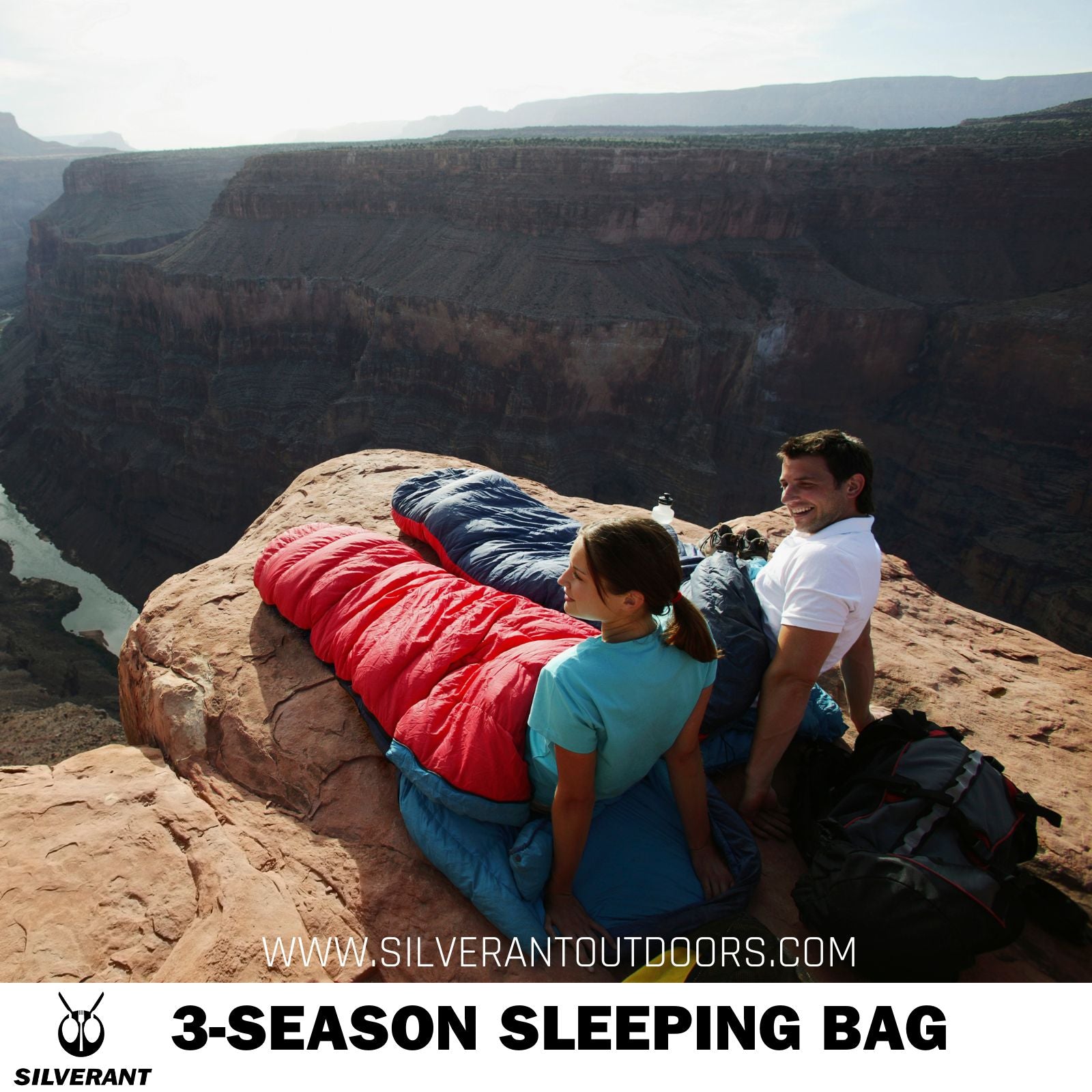
Sleeping Pad
In addition to a cozy sleeping bag, a reliable sleeping pad is an essential piece of gear for summer camping, especially when setting up camp on uneven ground, dirt, or wet grass.
When choosing a sleeping pad, it's important to consider its insulation value, also known as the R-value.
Opting for a pad with an R-value ranging from 2 to 3.9 ensures effective insulation against the cool ground and helps retain your body heat during those summer nights.
Among the various types of sleeping pads available, air pads are a popular choice for summer camping.
These pads can be easily inflated with air, providing a comfortable and supportive surface to rest on.
They offer excellent adjustability, allowing you to customize the firmness of the pad according to your personal preference and the specific comfort level you desire.
To enhance insulation and ensure a warm and comfortable night's sleep, it's recommended to select an air pad with insulated synthetic material.
This combination provides reliable insulation properties, even in humid or damp conditions that are often encountered during summer camping trips.
Additionally, synthetic materials are moisture-resistant, making them easier to clean and maintain.
When it comes to thickness, a sleeping pad with a range of 2 to 2.9 inches strikes a good balance between comfort and portability.
It offers sufficient cushioning to alleviate pressure points and promote a restful sleep, while still being lightweight and compact enough to fit in your backpack or camping gear.
One outstanding option that meets all these criteria is the Ultralight Insulated Air Sleeping Pad from Sea to Summit.
Designed specifically for summer camping, this sleeping pad provides exceptional insulation to keep you comfortable and warm throughout the night.
Its lightweight and compact design makes it perfect for backpacking adventures or any summer camping excursion where space and weight are important considerations.
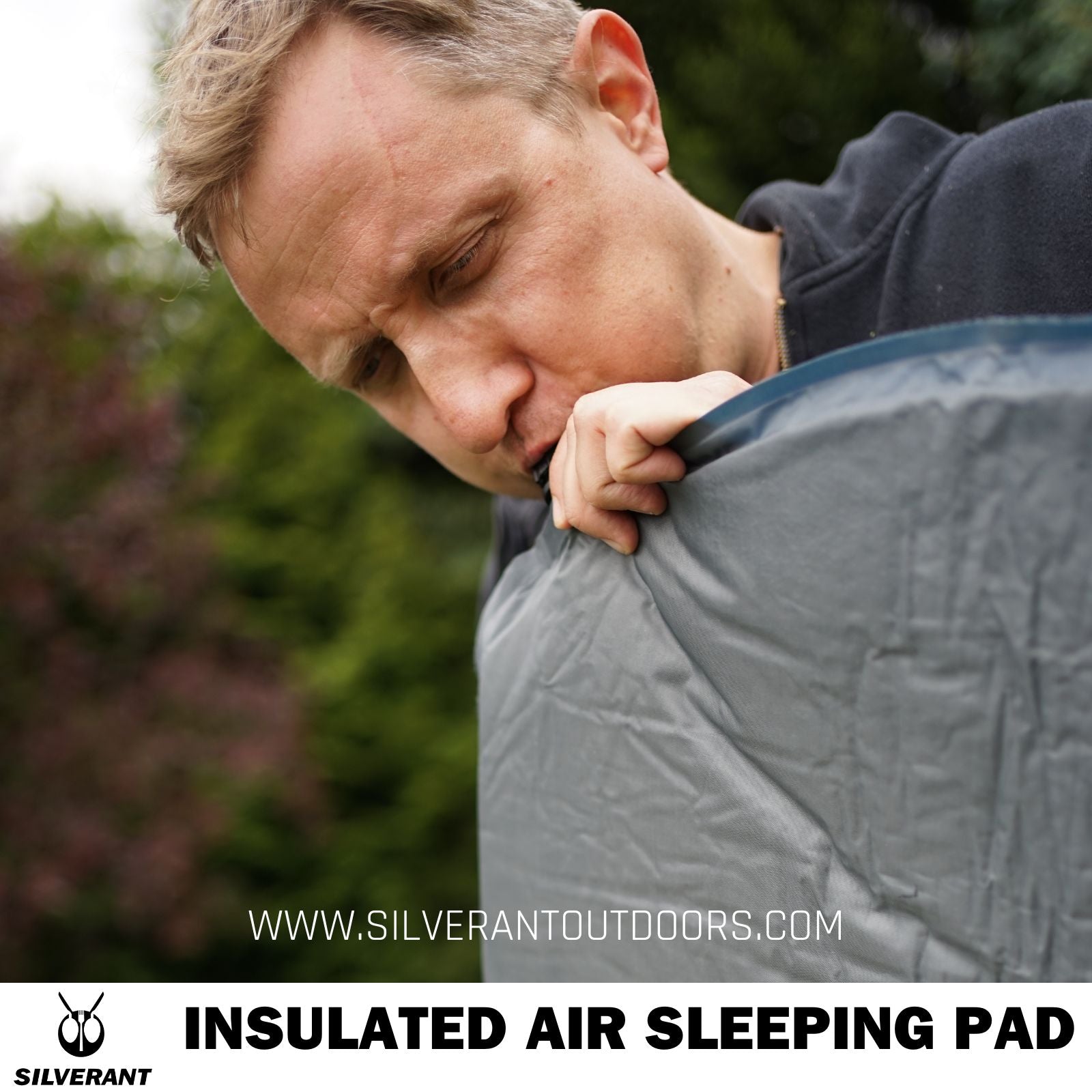
By selecting the right sleeping bag and sleeping pad for your summer camping trips, you can ensure a comfortable and rejuvenating night's sleep, allowing you to make the most of your outdoor adventures under the summer sun.
Clothing
Once you've taken care of the Big Four essentials, it's time to shift your focus to the clothing items you'll be packing for your outdoor adventure.
When choosing your clothing, it's crucial to consider the expected weather conditions and prioritize lightweight and moisture-wicking fabrics like merino wool.
These fabrics will help regulate your body temperature and keep you comfortable throughout your journey.
Among the essential clothing items to include are quick-drying long-sleeve shirts and pants.
These will prove useful when you need to wash or rinse them during your trip, as they will dry quickly and be ready for use again in no time.
Additionally, having long sleeves will provide protection against sunburn, insect bites, or unexpected temperature drops during the evenings.
Don't forget to pack moisture-wicking underwear and socks, which will keep you dry and comfortable, even during intense physical activities.
These items will help prevent chafing and keep your feet fresh throughout your outdoor explorations.
An indispensable item for unpredictable weather conditions is a waterproof and breathable rain jacket.
Look for a jacket that offers reliable protection against rain and wind while allowing moisture to escape, ensuring you stay dry and comfortable.
To shield yourself from the sun's rays, make sure to pack a sun hat and sunglasses.
These accessories will provide vital protection for your face and eyes during sun-drenched hikes or prolonged exposure to the outdoors.
When selecting footwear for your summer backpacking trip, prioritize lightweight yet sturdy hiking boots or trail shoes that offer excellent traction and support.
These types of footwear will not only protect your feet but also enhance your comfort as you navigate different terrains and tackle challenging trails.
Opting for lighter boots can also aid in reducing fatigue and increasing agility on the trail.
Additionally, lighter boots tend to dry faster if they happen to get wet during your hike.
Apart from that, don’t forget to bring along dry bags to safeguard your shoes from rain and moisture.
These bags provide an extra layer of protection, ensuring your footwear stays dry and ready for use.
Additionally, consider carrying a pair of sandals or camp shoes like Chaco or Teva.
These brands are known for their comfort and are perfect for allowing your feet to rest and breathe at the campsite after a long day of hiking.
Giving your feet a break from the confines of hiking boots can provide much-needed relief and aid in recovery for the next day's adventures.
Lastly, it's wise to include some extra sun sleeves in your gear.
These lightweight and breathable sleeves offer UPF (Ultraviolet Protection Factor) to shield your arms from harmful UV rays.
They come in handy if all your long sleeves are wet, and you need an alternative option while still protecting your arms.
When selecting clothing brands, trusted options include The North Face, Columbia Sportswear, Salomon, and La Sportiva.
These brands are renowned for their quality and durability in outdoor clothing and footwear.
By packing the right clothing for your outdoor adventure, you can ensure comfort, protection, and optimal performance throughout your journey.
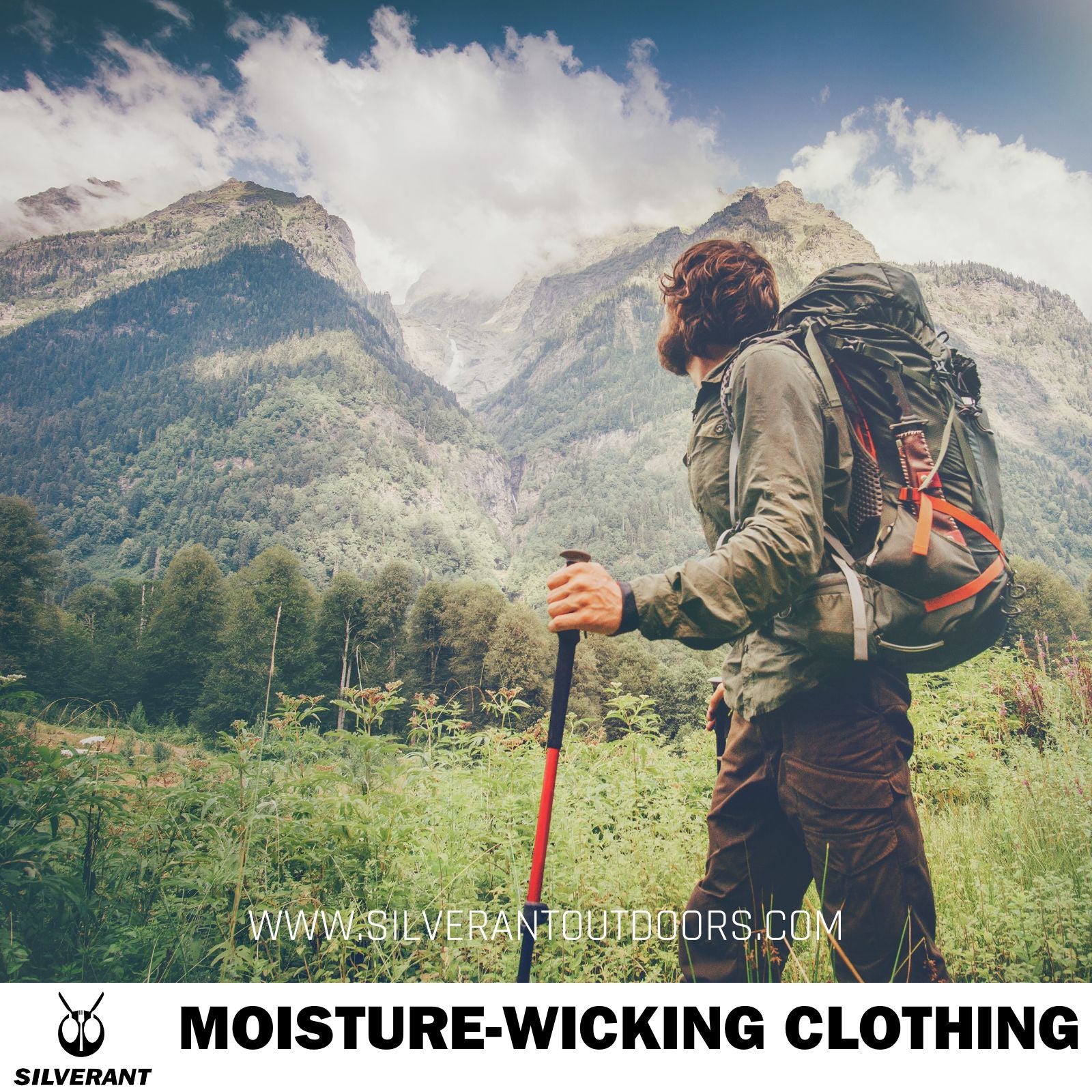
Water and Food
When embarking on your summer outdoor adventure, it's essential to prioritize proper hydration.
Unlike winter camping, where staying warm is a primary concern, summer camping presents the risk of dehydration due to the higher temperatures and increased physical activity.
Water
To maintain optimal hydration, it's recommended to consume a minimum of 67.6 fluid ounces (2 liters) of water per day.
However, carrying such a large quantity of water can be impractical and add unnecessary weight to your pack.
A practical solution is to bring along a lightweight water bottle that can be easily refilled along the way.
Additionally, consider including a water filter and purification tablets in your gear to ensure a safe drinking supply, especially if you'll be relying on natural water sources.
Our Sports Edition Titanium Water Bottle, with a capacity of 700ml/23.67 fluid ounces, is an excellent choice for summer camping.
Its lightweight design makes it easy to carry, and its durability ensures it can withstand the rigors of your outdoor adventures.
The bottle is not only suitable for carrying water but also allows you to boil water directly in it, making it a versatile cooking tool.
By using purification tablets, you can further safeguard your drinking water, eliminating any concerns about waterborne contaminants.
Furthermore, the Titanium Water Bottle is compatible with CamelBak water filters, offering an additional layer of filtration for peace of mind.
This feature ensures that even when you encounter questionable water sources, you can still enjoy safe and refreshing hydration throughout your journey.
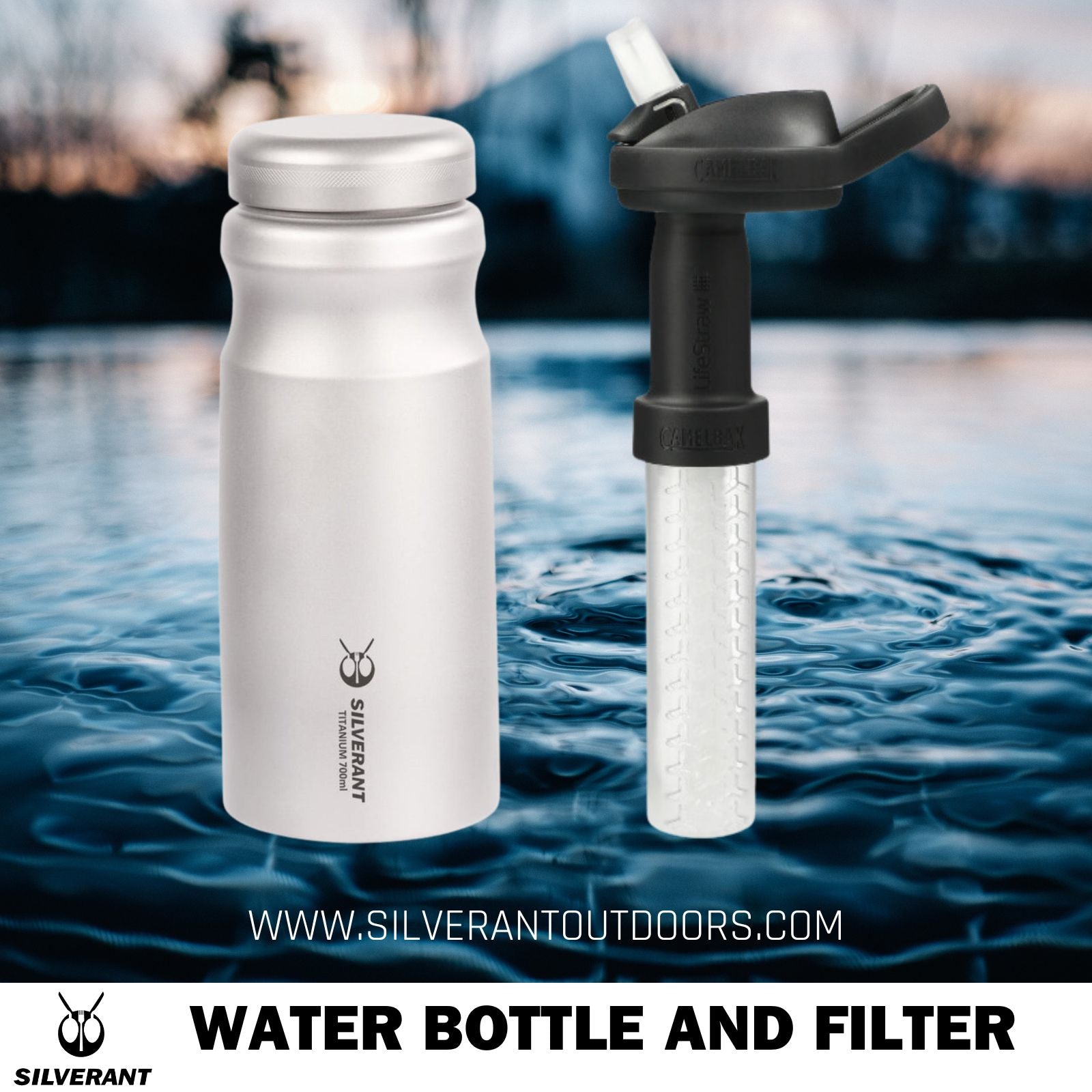
Food
Careful meal planning is an essential aspect of ensuring a successful summer camping trip.
When the temperatures soar, it becomes crucial to select foods that are lightweight, non-perishable, and capable of providing the necessary energy to fuel your outdoor adventures.
When packing your meals, it's wise to include a diverse range of options.
Energy bars are a convenient choice as they offer a quick source of fuel, making them ideal for on-the-go snacking during your camping excursions.
For those with a more generous budget and a desire for high-quality snack bars, exploring the offerings from Greenbelly is worth considering.
These snack bars not only provide a substantial calorie content but also offer a well-balanced nutritional profile, ensuring you stay fueled and satisfied throughout your activities.
Nuts are another excellent choice, as they offer a good balance of protein and healthy fats. They provide sustained energy throughout the day, keeping you going during your outdoor pursuits.
Dehydrated meals have long been a popular choice among outdoor enthusiasts. These meals are lightweight, compact, and require minimal preparation. Simply add hot water, and you'll have a satisfying and nutritious meal ready in no time.
Dried fruits should also find their way into your camping food stash. Not only do they offer a delightful and natural sweetness, but they also provide natural sugars that can give you an energy boost during your outdoor activities.
By opting for lightweight, calorie-dense foods, you can ensure you have enough nourishment to sustain your energy levels without adding unnecessary weight to your backpack.
Furthermore, pre-portioning your meals and snacks in advance can help save space and make mealtime preparation more convenient.
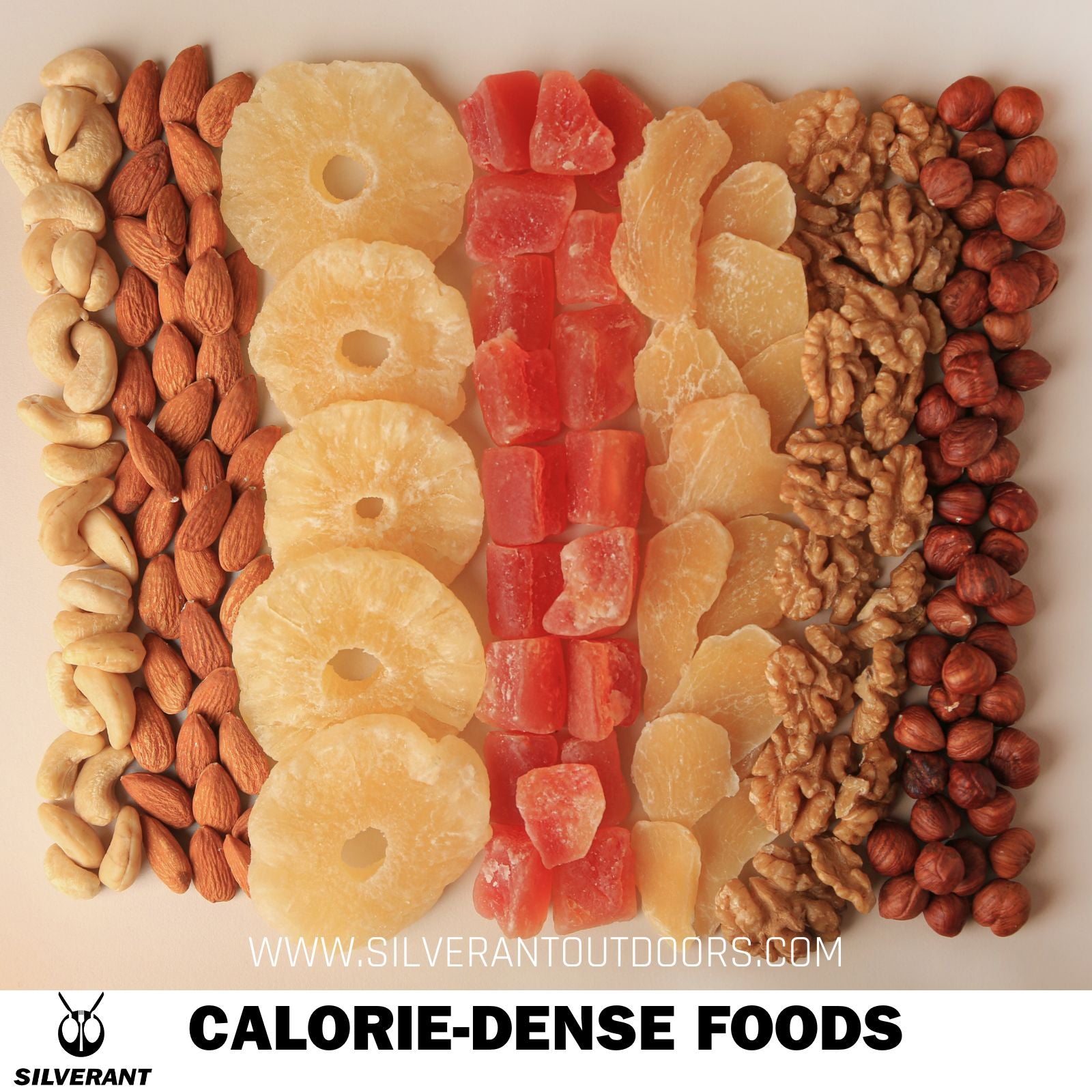
Remember, maintaining proper hydration and fueling your body is essential for maximizing your energy levels and fully enjoying your summer camping experience.
With thoughtful meal planning and a variety of nutritious options, you'll be well-equipped for an adventure-filled journey.
Cooking Gear
When it comes to choosing the cooking gear for your summer backpacking trip, the most important factor to consider is weight.
The weight of your gear becomes critical when you have to carry it over long distances, so it's crucial to prioritize lightweight options that won't burden you or strain your backpack unnecessarily.
Titanium is an outstanding choice among lightweight materials for cooking gear.
It combines the advantages of being lightweight, durable, and even health-conscious.
The remarkable strength-to-weight ratio of titanium allows you to enjoy the benefits of a robust cooking vessel without compromising on weight or durability.
Moreover, titanium cookware is resistant to corrosion, making it a smart long-term investment for your outdoor cooking needs.
Cooking Gear List
When assembling your cooking gear, simplicity and minimalism should be your guiding principles.
A lightweight stove, along with an ample supply of fuel, is a fundamental component.
Look for compact and efficient stove options that can quickly boil water and provide sufficient heat for cooking your meals.
Two popular stove options are the multi-fuel alcohol stove and the canister stove.
These stoves are easy to use and reliable, and even a small amount of fuel can last for a long time.
However, during the summer, the SilverAnt team doesn't recommend using a wood stove.
The weather can be unpredictable, and finding dry wood for burning might be challenging.
For cookware, an essential item is a lightweight pot or cup that can accommodate your cooking needs.
After boiling water in your titanium water bottle, you can add your dehydrated food, pour in hot water, and stir to have a satisfying meal in no time.
Look for compact options with sturdy lids to minimize the risk of spills and maximize cooking efficiency.
Remember to strike a balance between functionality and weight.
To save space and weight, consider investing in a dual-end utensil that combines a knife, fork, and spoon into one compact tool.
This versatile utensil eliminates the need to carry separate cutlery and further reduces the overall weight of your gear.
Additionally, it's a wise idea to pack a reliable flint fire starter or waterproof metal matches.
These tools can be invaluable for starting a fire when cooking or warmth is required, especially in emergency situations.
Having these fire-starting tools ensures that you're prepared for unexpected circumstances or when cooking over an open flame becomes necessary.
By adhering to the principle of lightweight gear, you can create a cooking setup that is efficient, functional, and easy to carry.
It's important to prioritize simplicity and functionality while carefully considering the weight of each item you pack.
This approach allows you to have all the necessary tools without burdening yourself with unnecessary weight.
Following this strategy, you'll be equipped with the essential tools to prepare delicious meals and fully enjoy the outdoor cooking experience during your summer backpacking adventures.
Don't hesitate to explore our collection of cookware to find the right gear for your needs.
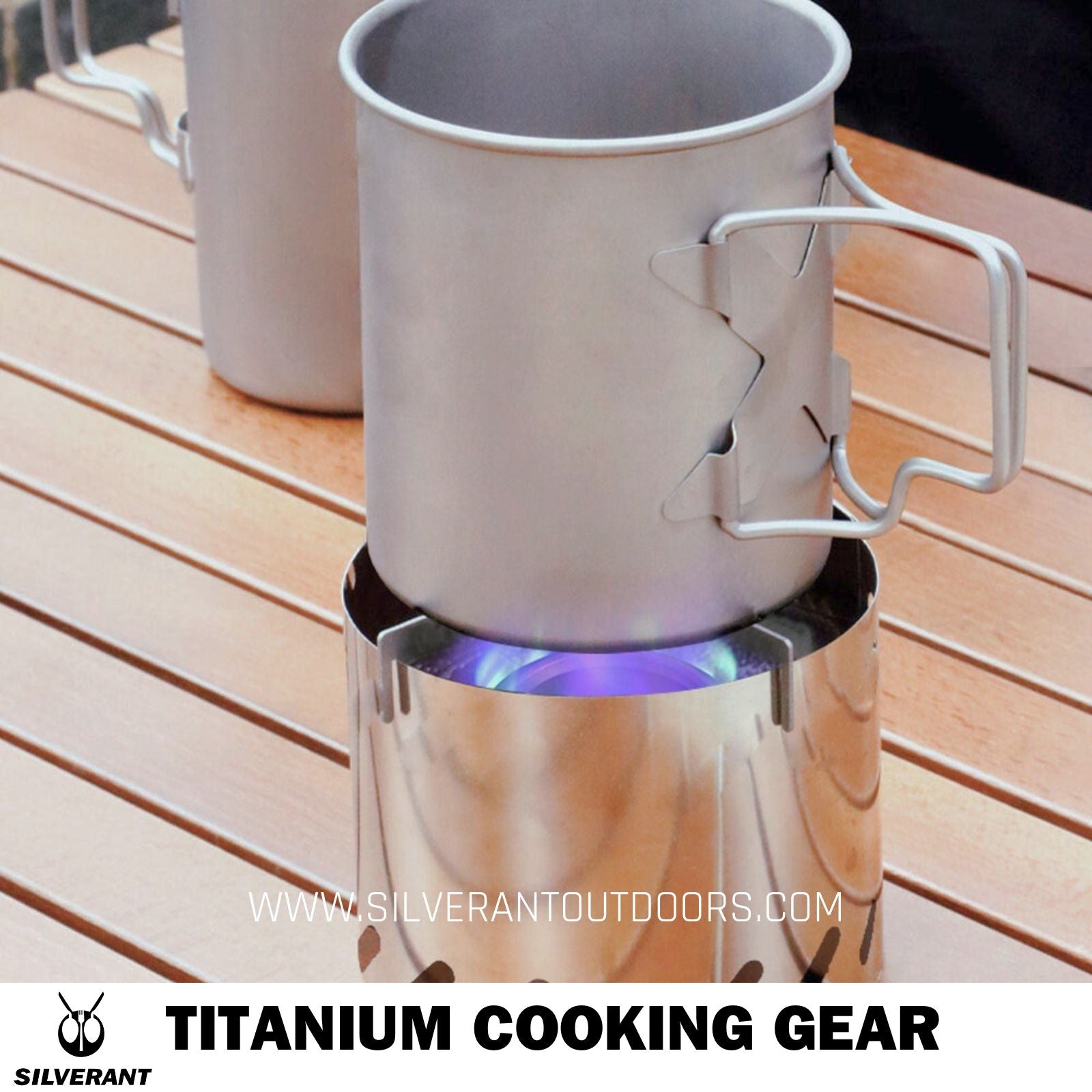
Navigation and Safety
Once you've had a restful sleep, and ensured you're hydrated and fueled, the next challenge is to navigate your way confidently through the wilderness.
To do so, it's important to have the following essential items with you:
Map and Compass
Start with a topographic map and compass.
The topographic map provides detailed information about the terrain, including elevation, trails, and landmarks.
When combined with a compass, it becomes a reliable tool for orienting yourself and finding your way.
Before your trip, take the time to familiarize yourself with map reading and compass navigation techniques.
GPS Device
As a backup, consider carrying a GPS device or smartphone with offline maps.
These devices provide real-time location tracking and can be especially helpful in areas with complex trail systems or limited visibility.
Having offline maps on your smartphone or a dedicated GPS device can be invaluable in ensuring you stay on track.
Whistle
In case of emergencies or if you find yourself lost, a whistle is a simple yet effective signaling tool.
Its sound can carry over long distances and attract attention.
Remember to learn the proper signaling protocols, such as three short bursts to indicate a distress signal, and keep a whistle readily accessible.
Headlamp
When navigating in low-light conditions or during nighttime, a headlamp with extra batteries is essential.
Look for a reliable headlamp from trusted brands like Black Diamond or Petzl, known for their quality and durability.
Having hands-free illumination will make it easier to navigate safely and efficiently.
First Aid Kit
Safety should always be a priority, so don't forget to pack a well-stocked first aid kit.
Include items such as bandages, adhesive tape, antiseptic wipes, pain relievers, and any necessary personal medications.
Familiarize yourself with basic first aid procedures, and if possible, consider taking a wilderness first aid course to enhance your knowledge.
Sunscreen
Protecting yourself from the elements is crucial for your comfort and well-being.
To safeguard your skin from the harmful effects of the sun, it's essential to pack sunscreen with a high SPF rating.
An SPF of 30 provides a strong defense against both UVA and UVB rays, shielding your skin from potential damage.
However, if you have fair or sensitive skin, or anticipate prolonged sun exposure, opting for a higher SPF, such as 50 or even 50+, is perfect for enhanced protection.
In addition to sunscreen, it's important to consider sun-aftercare products like aloe vera.
These soothing remedies can provide relief for sunburns, ensuring your skin stays comfortable and hydrated after prolonged sun exposure.
Furthermore, don't overlook the need for insect repellent when venturing into wilderness areas.
Mosquitoes and other biting insects can be prevalent, and their bites can be both irritating and carry potential health risks.
Including a reliable insect repellent in your pack will help ward off these pests, allowing you to enjoy your outdoor activities without unnecessary discomfort.
One of the best choices is the Sportsmen Deep Woods® Insect Repellent 2 by OFF!®. This repellent offers long-lasting protection, making it ideal for outdoor enthusiasts like yourself.
It effectively repels mosquitoes, chiggers, biting flies, and even ticks, providing you with a comprehensive defense against a range of insects.
Multi-tool or Swiss
A versatile multi-tool or Swiss army knife is a handy addition to your gear.
These compact tools often feature a knife, scissors, pliers, screwdrivers, and other useful features.
They can be indispensable for repairing gear, preparing meals, or handling unexpected tasks on the trail.
Before embarking on your wilderness adventure, take the time to familiarize yourself with the proper use of each item and practice using it.
Carrying these essential items will provide you with the necessary tools to navigate safely, handle emergencies, and enjoy a successful and memorable wilderness experience.
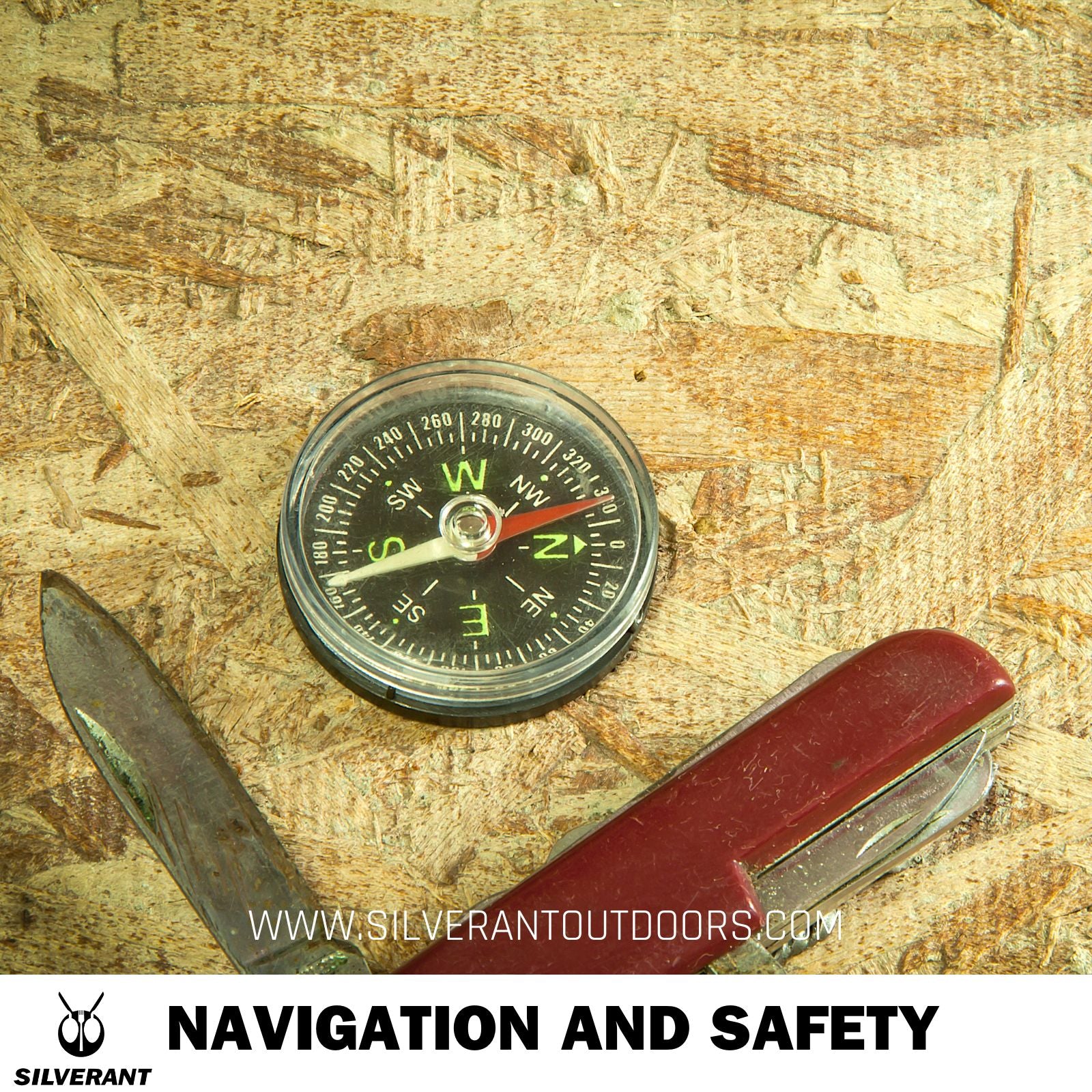
Hygiene and Toiletries
Maintaining personal hygiene is an essential aspect of any extended trip, even though it may not be the most thrilling part of the adventure.
To ensure you stay clean and comfortable during your journey, it is important to pack a few key hygiene and toiletry items in small and lightweight containers.
Biodegradable Soap
One of the most important items to include is biodegradable soap.
This type of soap is not only gentle on your skin but also environmentally friendly, ensuring that it won't leave a negative impact on the wilderness.
Choose a soap that is suitable for both body and hair, as it will help minimize the number of items you need to carry.
Toothbrush and Toothpaste
Don't forget to pack a toothbrush and toothpaste to maintain good oral hygiene.
Opt for a compact toothbrush that takes up minimal space and choose a travel-sized toothpaste tube.
Keeping your teeth clean and fresh can make a significant difference in how you feel during your outdoor adventure.
Quick-drying Towel
A quick-drying towel is another essential item for maintaining hygiene on the go.
Look for a lightweight and compact towel that is designed to dry quickly, allowing you to use it multiple times without it becoming heavy or damp.
This type of towel is perfect for drying off after swimming, washing, or simply freshening up.
As a passionate enthusiast of swimming in natural environments during the summer, I can confidently say that a quick-drying towel is an absolute game-changer.
Hand Sanitizer
Hand sanitizer is a crucial item to have on hand, especially when water is not readily available.
Use it to disinfect your hands before meals or after using the restroom, helping to prevent the spread of germs and keeping yourself and others healthy.
Toilet Paper
Toilet paper is a must-have item for any outdoor excursion.
Pack it in a resealable plastic bag to keep it dry and easily accessible.
Remember to follow Leave No Trace principles by properly disposing of used toilet paper in designated waste receptacles or by burying it in a cathole at least 6–8 inches deep.
Wet Wipes
Wet wipes are incredibly convenient for refreshing wipes when traditional bathing is not possible.
They can help you feel clean and refreshed after a long day of hiking or when you need a quick freshening up.
By including these essential hygiene and toiletry items in your pack, you can maintain personal cleanliness and comfort throughout your extended trip. Remember to prioritize lightweight and compact options to minimize the weight of your backpack and make your outdoor experience more enjoyable.
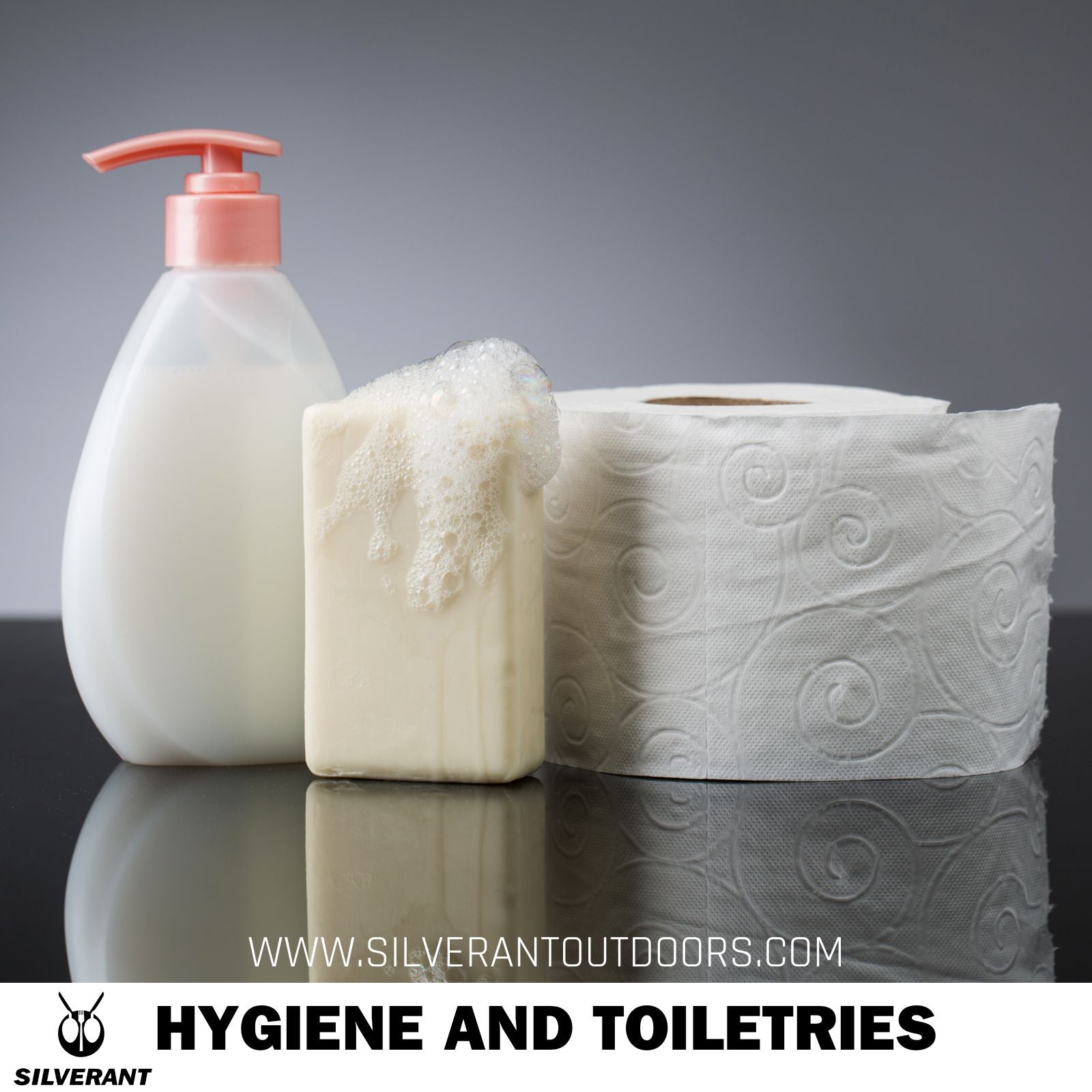
Conclusion
To ensure a safe and enjoyable summer camping trip, proper planning and preparation are crucial.
Choose lightweight and durable camping gear like a sturdy tent, comfortable sleeping bag and sleeping pad, and reliable backpack.
Opt for moisture-wicking clothing made of lightweight fabrics. Carry a rain jacket or poncho for unexpected showers.
Stay hydrated with a lightweight water bottle, filter, and purification tablets.
Pack calorie-dense, lightweight foods such as energy bars, nuts, and dehydrated meals.
For cooking, prioritize lightweight titanium cookware and a compact stove.
Bring essential navigation tools like a map, compass, GPS device, whistle, headlamp, first aid kit, sunscreen, insect repellent, and a multi-tool or Swiss army knife.
Don't forget personal hygiene items like biodegradable soap, toothbrush, toothpaste, quick-drying towel, hand sanitizer, toilet paper, wet wipes, and menstrual products if needed.
Familiarize yourself with safety protocols, leave no trace principles, and any area-specific regulations.
Embrace the beauty of nature, engage in outdoor activities, and create lasting memories while showing respect for and preserving the environment.
If you have any further questions, feel free to leave a comment below.
To your next adventure!
Steve












































